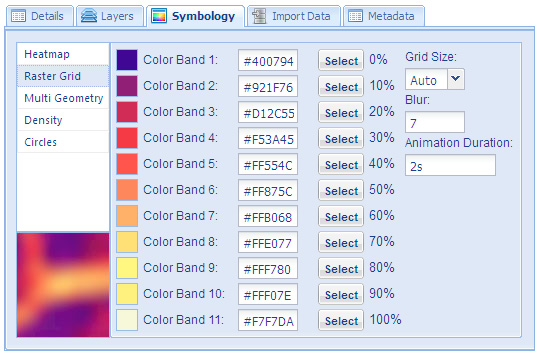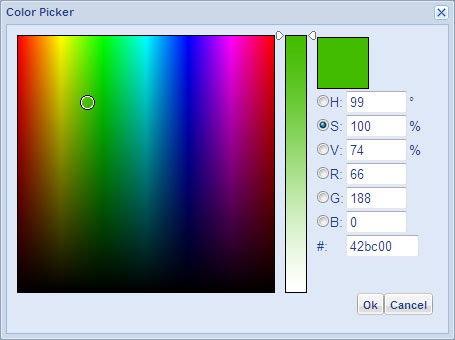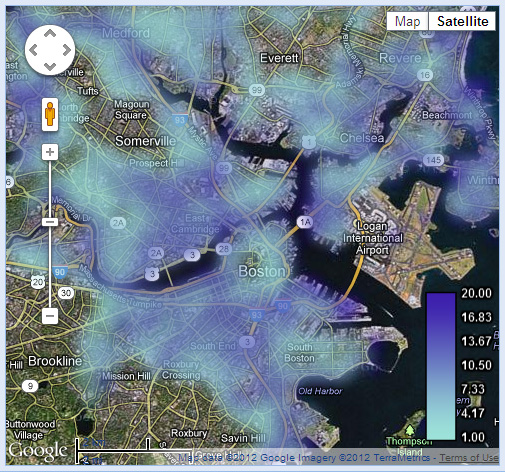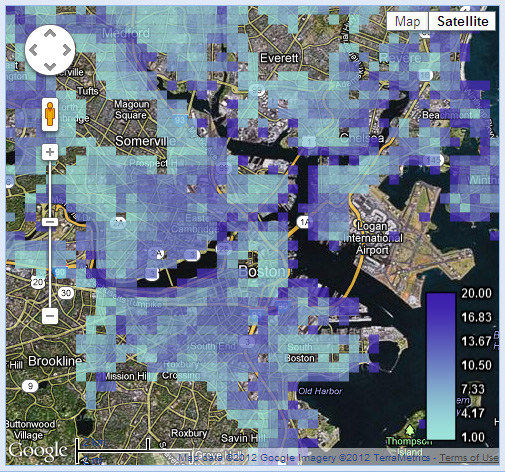Raster Grid
Overview
 |
 Raster Grid Raster Grid
The Raster Grid layer suits data that is fairly closely packed together. When a Raster Grid layer is selected
all the spatial data visible in the maps bounding box is assigned to a cell position in a grid. The grid size can be set to auto or
can be set to a specific grid size that best represents the data set. You can set the type of
aggregation used for all the values in each grid cell. The aggregation options are minimum, maximum, average and
sum. You can assign multiple aggregation functions to the dataset's value which will be
represented as separate layers.
|
Symbolgy
The Raster Grid symbology can be be altered either:
- In the Viewer when viewing the layer where the symbology changes will stay in effect only until the
layer tree is reloaded.
- In the Manager when adding or updating the dataset. These changes will stay in effect indefinitely until the symbology is
again updated.
In the Viewer you can temporarily change the Raster Grids layer symbology in the Viewer by right clicking the layer in the layer tree
and selecting symbology from the menu.

Or you can click the Symbology button while the layer is selected in the layer tree. Selection in the layer tree means the
item in the tree has been clicked and is highlighted it does not mean that the item has its checkbox ticked.

In the Manager you can change the layer's symbology by editing it's symbology panel
in the Symbology tab. These changes will stay in effect until the symbology is again updated

Color Bands
You can change the colors used to represent each color band that is used to render the Raster Grid layer.
When the layer is displayed the minimum and maximum aggregated grid values are calculated based on all the data that
is present in the displayed map. Each grid is assigned a number between 0 and 100 and the color assigned to the grid will be
its position relative to the color bands that it lies between. Eleven color bands are used to represent the lowest value 0,
the 0-10 spread (Color Band 1), the 10-20 spread (Color Band 2) all the way up to the maximum value which is 100 (Color Band 11)
which is the grid with the largest aggregated value.
You can click the select button to popup a color picker (shown below) to help choose your desired color.

Grid Size
You can set the grid size to a fixed value to be used when the layer is rendered. A grid size of 50 means the data will
be arranged in to a 50x50 grid. Where data is more spaced out you may want to lower the grid size to help ensure the
layer gets enough coverage to reduce gaps. Selecting auto will automatically set a grid size based on the size of the map.
Blur
A blur is used to smooth the gradients transition between the neighboring grid cells, the blur value can be
set in the symbology settings.
The following screenshot shows the Boston flood model layer with blue color bands and the blur value set to 7:

The following screenshot shows the same Boston flood model layer with the blur value set to 0:

Animation Duration
The Raster Grid layer is supported by the Animation Generator to create
animations between two Raster Grid layers. You can specify the animation duration.
Once the animation has completed it starts again from the beginning.
Legend
When the Raster Grid layer is displayed a legend is also displayed showing the color bands and the values that are
presently assigned to those color bands.

|